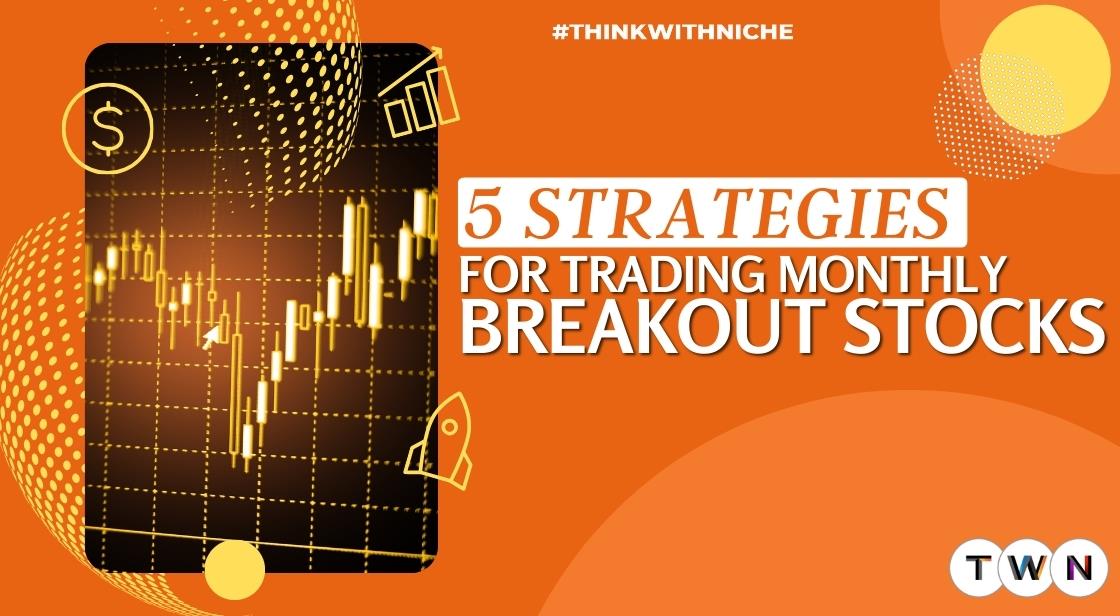5 Strategies for Trading Monthly Breakout Stocks

Blog Post
In the dynamic world of stock trading, identifying breakout stocks can be a game-changer for traders looking to capitalize on market momentum. These stocks, characterized by a sharp increase after breaking out of a trading range or pattern, present lucrative opportunities for savvy investors. However, navigating the complexities of breakout trading requires a solid understanding of effective strategies and risk management techniques.
In this comprehensive guide, we delve into the top five strategies for trading monthly breakout stocks. From understanding breakout patterns to leveraging technical indicators and managing risk, we equip traders with the knowledge and tools needed to succeed in this high-potential yet inherently volatile market.
Whether you're a seasoned trader or just starting out, mastering these strategies can help you unlock the full potential of breakout stock trading and achieve your financial goals.
Join us as we explore the intricacies of breakout trading and empower you to make informed decisions in the pursuit of profitable trading opportunities.
Let's dive in and uncover the secrets to successful breakout stock trading.
Breakout stocks have recently broken out of their trading range or price consolidation patterns. Subsequently, these stocks have begun to increase sharply. Traders use different indicators to identify stocks.
The approach of breakout stock strategies involves identifying a price point where the stock is likely to break out and then entering a trade in the direction of the break. Whether the market is bullish or bearish, traders can utilize a range of techniques to identify these breaks. This article will explain the best five effective monthly breakout stock trading strategies.
Top 5 Breakout Stocks Trading Strategies
1. Understanding the Breakout Pattern
The breakout pattern is one of the most widely used trading strategies in the stock market. Different patterns exist in the stock market, such as the ascending triangle, descending triangle, or head-and-shoulders pattern.
Each pattern shows a significant change in the price of the security. A break occurs when the price of a security moves beyond key levels of support or resistance, indicating that it may be about to reverse course.
The breakout pattern is an analysis tool for traders to identify price trends. Depending on the direction of the break, it can be seen as a Bullish or a Bearish signal. A bullish breakout occurs when the price of security breaks through a critical resistance level, which indicates possible upward movement. If the security price breaks below a crucial level of support, suggesting a potential decline, a bearish break occurs.
2. Identifying Breakout Trading Opportunities
Chart pattern analysis is one of the most important techniques for identifying breaking points. Potential breakouts can be detected by patterns such as triangles, flags, or heads and shoulders. For instance, an ascending triangle pattern often signifies a bullish breakout, where the stock's price is likely to increase. On the contrary, a descending triangle can indicate a downside break.
Using technical indicators—the moving Average Convergence divergence (MACD), relative strength index (RSI), and Bollinger Bands—can provide valuable insight into potential breakouts. For example, if the MACD line crosses above the signal line, it may lead to a bullish break. Conversely, if the RSI is over 70, it could be a sign of an Overbought condition that might lead to a Bearish break.
3. Setting up Your Breakout Trading System
One of the most important decisions you will have to make when developing your Breakout Trading System is which trading times are appropriate. Short-term intraday traders may opt for five- or 15-minute charts, while swing traders are more likely to prefer daily and weekly charts.
Your tolerance for risk and the amount of time you're willing to spend on trading are essential. Additionally, consider setting clear entry and exit rules and regularly reviewing and adjusting your system based on market conditions.
The backbone of the breakout trading system is clear entry and exit rules. The rules set the time at which a transaction should be initiated and determine when to close it. For example, if the price moves below a certain level of support, you can set an entry rule to buy and an exit rule to sell when it breaks above a specific resistance level. These rules should be obvious to minimize ambiguity and emotional decision-making.
Also Read: 5 Investment secrets from Indian Stock Market king Rakesh Jhunjhunwala
4. Managing Risk in Breakout Trading
Implementing stop-loss orders is a key method of managing risk in breakout trading. These orders automatically sell your position if the price reaches a predetermined level, limiting potential losses. Alternatively, mental stops allow you to decide when to exit a trade manually. Both methods have their advantages and disadvantages.
Stop-loss orders are designed to instill discipline and remove emotions from decision-making, although they can be susceptible to market manipulation. Rest assured, these strategies are in place to protect your investments.
5. Using Technical Indicators to Confirm Breakouts
The moving average is one of the most frequently used technical indicators to validate breakouts. Traders often look at the relationship between a stock's current price and its moving average. For example, a bull breakout may occur if the stock's price crosses above its 50-day moving average.
On the contrary, a bearish break may be seen if the price breaks beneath the Moving Average. The trader's strategy and time horizon determine the choice of a moving average period.
Another popular indicator of breakout confirmation is the RSI. For the purposes of evaluating overbought or unfavorable conditions, it measures the magnitude of any recent price changes. If an asset is overbought, where the RSI exceeds 70 and breaks above its resistance level, it may be a sign of possible breaking out.
Conclusion
Remember, breakout stocks can be a very profitable trading opportunity. They offer the potential for significant gains in a short period. However, they can also be very risky. If the stocks cannot maintain their momentum and reverse it, traders can suffer significant losses.
Therefore, to achieve a successful portfolio, the market and company must understand each other. With the help of these strategies mentioned above, you can easily trade monthly breakout stocks. However, it's important to be aware of the potential risks and rewards of breakout trading and to trade responsibly. An online trading app like BlinkX is one of the best apps for starting stock trading.
You May Like
EDITOR’S CHOICE












